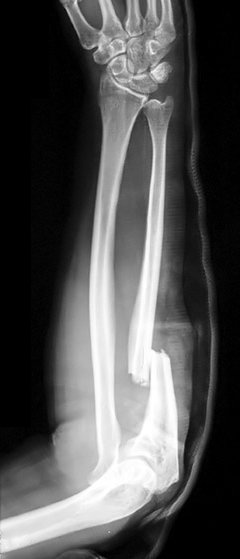Arm Fracture Overview
There are three long arm bones that are in the arm and these are the humerus (upper arm), the radius, and the ulna. These three arm bones are actually sturdy but arm fracture can happen during falls with an outstretched arm or when the person figured in a crash, where a direct blow to the arm occurred. Traumas are also the usual culprit for a broken arm and these can happen during motorcycle accidents and when engaging in high-impact sports.The most common arm fracture occurs in the thin midsection or shaft of the arm because it happens to be the longest bone. However, any bone can break depending on the position when the arm encounters trauma or impact.

Types of Arm Fracture or Broken Arm
Arm fractures are of three different types because there are three major bones in the arm and these fracture types are the following:• Humerus fracture. This is the fracture of the upper arm and this occurs when the upper arm bone is twisted out of place due to accidents or a fall. Athletes who use their arm beyond the limit usually have this kind of fractures, such as arm wrestlers, baseball players, discus, and javelin throwers.
• Forearm fracture. This involves the ulna and the radius. Depending on the collision of the arm to a hard object, sometimes both bones can break at the same time especially when car accidents happen. However, any of these bones can break individually which usually happens when the person uses his forearm to cover blows to his head.
Diagnosis of Arm Fracture
The physicians generally ask their patients how the fracture occurred so that they can determine which one must have been damaged. He will conduct a physical examination of the whole arm and will check for swelling, open wounds, bruises, and deformities. An x-ray would be taken to confirm the fracture. If there are bone protrusions on any part of the arm, a CT scan or an MRI will be needed for a more detailed and complete analysis of the fracture.
Arm Fracture Causes
An arm fracture is common among people who involve themselves with high-impact sports and use their arms often. Spiral fracture in the arm means the person has severely twisted his arm, which broke the bone, particularly the humerus. On the other hand, the forearm which is composed of the radius and the ulna is mostly fractured during sports accidents such as in-line skating, roller skating, skateboarding, motorcycle, and bicycle riding because the tendency of the person during fall is to use the arm to break the fall thus breaking the forearm bones. Any accident can also cause trauma to the arm and break the bones in it but the usual cause of arm fracture among adults is from car accidents and falls.Arm Fracture Symptoms
• Unbearable pain to the injured area, which gradually increases when the arm is moved.• Deformities if severe breakage occurs and when the bone goes out of position.
• The swelling will occur even without a fracture but swelling will be worse once a bone is broken
• An open wound that has a bone protruding from the skin.
• Numbness or tingling sensation on the hand. This can indicate damage to the radial nerve. The radial nerve is a crucial nerve that goes from the spinal column up to the fingers.
Arm Fracture Treatment
For first aid, always put the broken arm of the person in safer condition but avoid moving the fractured arm especially if there is a deformity or if the bone protrudes from the skin. Emergency services should be informed and somebody must stay with the patient so that he would not panic. If without the easy access to the hospital, a temporary splint can be fabricated using only wood or even rolled up magazines. Immobilize the joint just above and below the area of the fracture and tie the splint by using a cloth, tape or belts. A sling can also immobilize the arm and prevent further injury.At the hospital, the doctor will conduct a quick diagnosis of the arm. If there is an incomplete fracture, the arm may only need casting or a sling until the bone attaches. But if severe bone fractures exist the doctor may correct the bones by means of bone reduction. This means putting the bone together through surgery and the use of wires and pins to reattach fragmented and displaced bones. General anesthesia will be used to put the person to sleep while the surgery is going on. A cast or a splint will then be placed on the arm and therapy may follow after the bones are in place again.
Comments
Post a Comment
Please do not enter any spam link in the comment box.